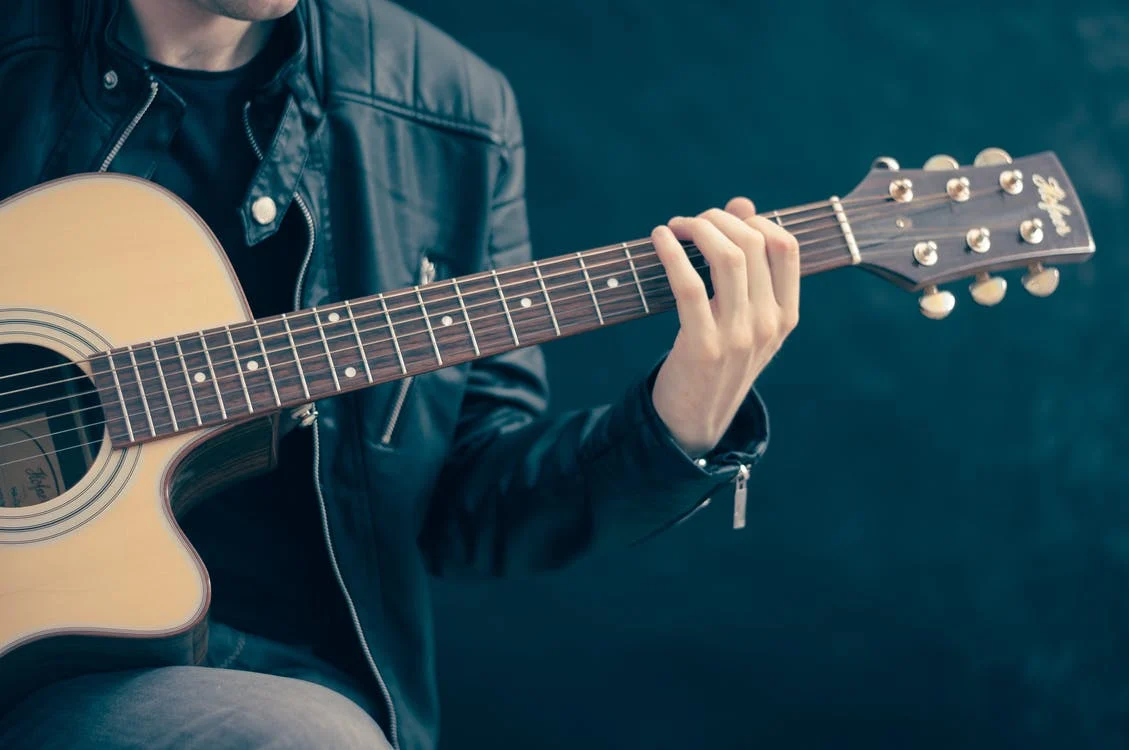We looked at various 16-inch acoustic archtops that were purely production models, most of which were available at Scharpach Guitars. In a different vein, we’ll now examine the construction of a magnificent bespoke archtop, from raw wood to the dazzling, completed instrument. Let’s see how custom archtop guitar makers make it? It’s based on my experience.
Back assembly
The process began with a hunt for the ideal billet. Makers shaped the rare walnut into a book-matched back, cemented the two pieces up, and then carved out the basic silhouette of the guitar.
After that, they bored a slew of quarter-inch holes into the rear to make carving into the arched shape simpler.
Sound assembly
They employed a select billet of Adirondack (a.k.a. red) spruce to build the soundboard—the valued tonewood famed for its rigidity and volume, which was regularly used on prewar acoustics but is now used very sparingly on current guitars due to logistical concerns.
They built a two-piece spruce soundboard and rough-carved the outside side while rejoicing with a Harpoon IPA or three before cutting the elliptical soundhole. The inner side was then treated with before cutting, glueing, and perfecting the fan framing. If you are interested in learning how to play guitar, check out classicalguitarshed.com and let the experts guide you starting from the basics.
Sides assembly
They cut and curved a set of sides from the same walnut board as the back, and linked them with a mahogany neck and tail block after detaching them from their moulds.
Box closing
Everything really started to come together as the body’s components are connected after the kerfing and lining are attached to the sides. The top has still to be carved; in the meantime, the next shot showcases the walnut’s outstanding hue and figure.
Detailing
The body was routed for binding. Instead of utilising stock plastic binding, they created their own using walnut and a defined line of light wood dyed red.
They varnished the body after the binding was put in place and the soundboard was cleaned, wiping on numerous coatings of a shellac-and-grain-alcohol combination.
They then cut a sound port—a secondary soundhole designed to focus the sound at the player’s ear—into the top bass bout, which had already been coated.
Neck assembly
The neck began with a raw slice of Mahogany Mama. A unique Tatsuta beta-titanium truss rod as well as a pair of headstock ears were installed on the roughneck and another one they were working on.
After that, the ebony headstock face is bonded on and carved to form. The Brazilian rosewood fingerboard is then put on and fretted, and the neck is hand-carved to an ergonomic C shape.
In preparation for the brass embellishment, the headstock face is routed out.
The 4mm indicator within the truss-rod chamber is provided so that the correct tool is used while tightening the neck. They finished the neck with a walnut heel cap and bone nut before installing the gold Waverly tuners, which have snakewood buttons to match the dark-wood elements.

